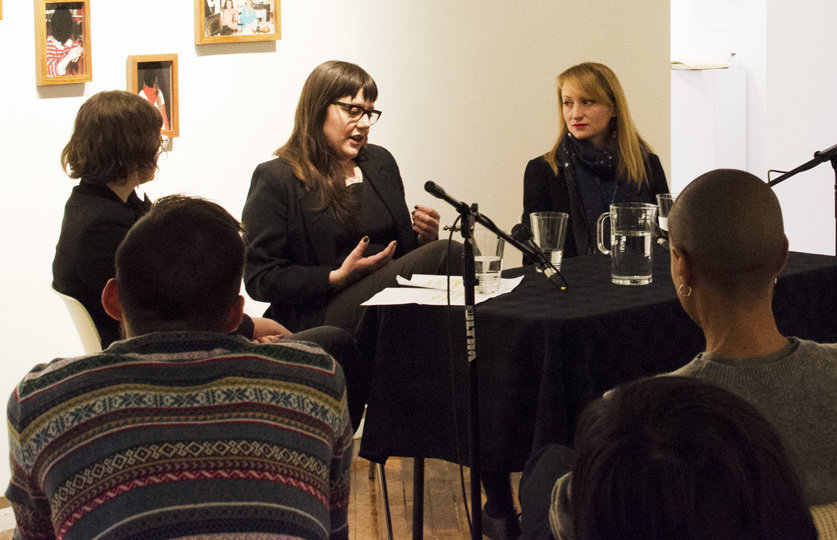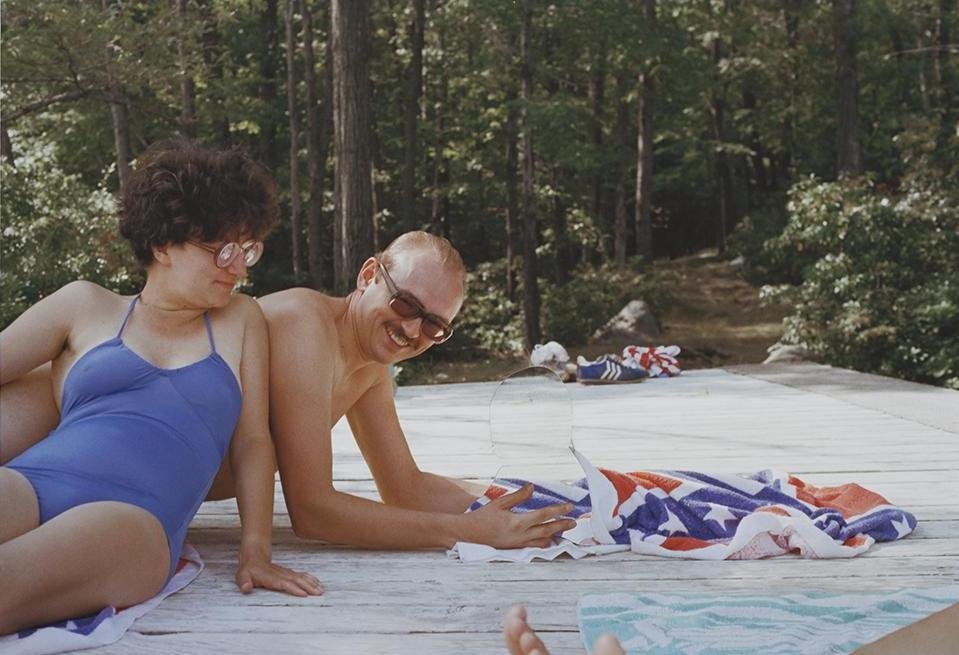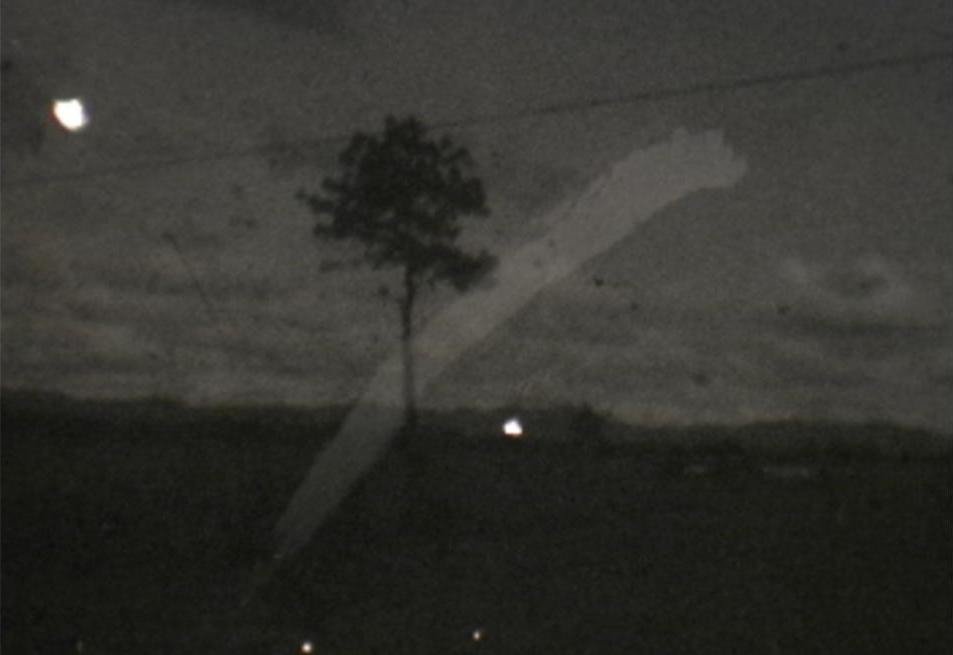The Disappeared, a new show at Gallery 44, features works by Tatiana Grigorenko and Zoë Heyn-Jones. The two artists discussed their projects during a brunch talk on January 17, 2015.
 Artists Zoë Heyn-Jones (left) and Tatiana Grigorenko (right)
Artists Zoë Heyn-Jones (left) and Tatiana Grigorenko (right)
Tatiana Grigorenko’s family history is closely tied to the big historical narrative, with the flight to the United States of her grand-father Petro Grigorenko, a famous Soviet dissident, shaping the future of her upbringing. Imitating and transcending the way of reshaping historical narrative by removing individuals who fell into disrepute from official photographs, Grigorenko explores the effects of disappearance of her own body in photographs from family archives. She uses an analog retouching method because of her appreciation for the imperfections inherent in it. The ghostly remains of the excised bodies prompt the viewer to seek to reconstruct the original, a process which draws attention to surprising details and generates a new narrative. The memory of the event is skewed, reshaped, reinvented.
 Tatiana Grigorenko, Confederate Flag, 16.5 x 11.5 inch archival inkjet print on cotton rag paper and collage, 2010-2012. Courtesy of Gallery 44
Tatiana Grigorenko, Confederate Flag, 16.5 x 11.5 inch archival inkjet print on cotton rag paper and collage, 2010-2012. Courtesy of Gallery 44
Memory is also a major focus of the visual explorations of Zoë Heyn-Jones. She tries to “get to the bottom of a memory”, namely her own childhood in a predominantly white settlement in Guatemala close to Santiago Atitlán, a town plagued by violence during the Guatemalan civil war. Heyn-Jones feels she has a “debt to the indigenous people”, which she aims to repay by exploring the history of Guatemala and expressing her finds visually. By shooting a film footage in single frames, she withdraws from the didactic nature of documentaries to produce a disorienting, scattered record, which she describes as true to her impression of the road, the town and its environs.
 Zoë Heyn-Jones, Atitlán 5, 12 x 18 inch inkjet print on fibrous paper; from scanned Super 8 film stills, 2013. Courtesy of Gallery 44
Zoë Heyn-Jones, Atitlán 5, 12 x 18 inch inkjet print on fibrous paper; from scanned Super 8 film stills, 2013. Courtesy of Gallery 44
While the questions raised by Grigorenko and Heyn-Jones certainly are important and worth considering, the means offered to the viewers for exploration do not seem to be quite as effective as the artists describe them to be. The overall methods are rather standard and some avenues for further visual explorations are not fully developed. For example, in a few images from Grigorenko’s series, the absent body influences the remaining body and transforms its gestures, for it now functions as an isolated compositional unit alienated from its original purpose. Aesthetically and conceptually, the change is tremendous. Yet, the effect is attenuated by other more straight-forward transformations, such as the cliché obscuring of the face in a portrait. Similarly, Heyn-Jones claims that her film has an “abstract” quality, which, in truth, is hardly manifest, for the footage retains a certain continuity which can be easily apprehended by the contemporary eye, used to fast-changing images. The Disappeared art show is hardly rescued by the historical significance of the events and figures present in its background.
Text and photo: Elena Iourtaeva
*Exhibition information: January 16 – February 21, 2015, Gallery 44 | Centre for Contemporary Photography, 401 Richmond Street West, Toronto. Gallery hours: Tue – Sat 11 – 5 p.m.


